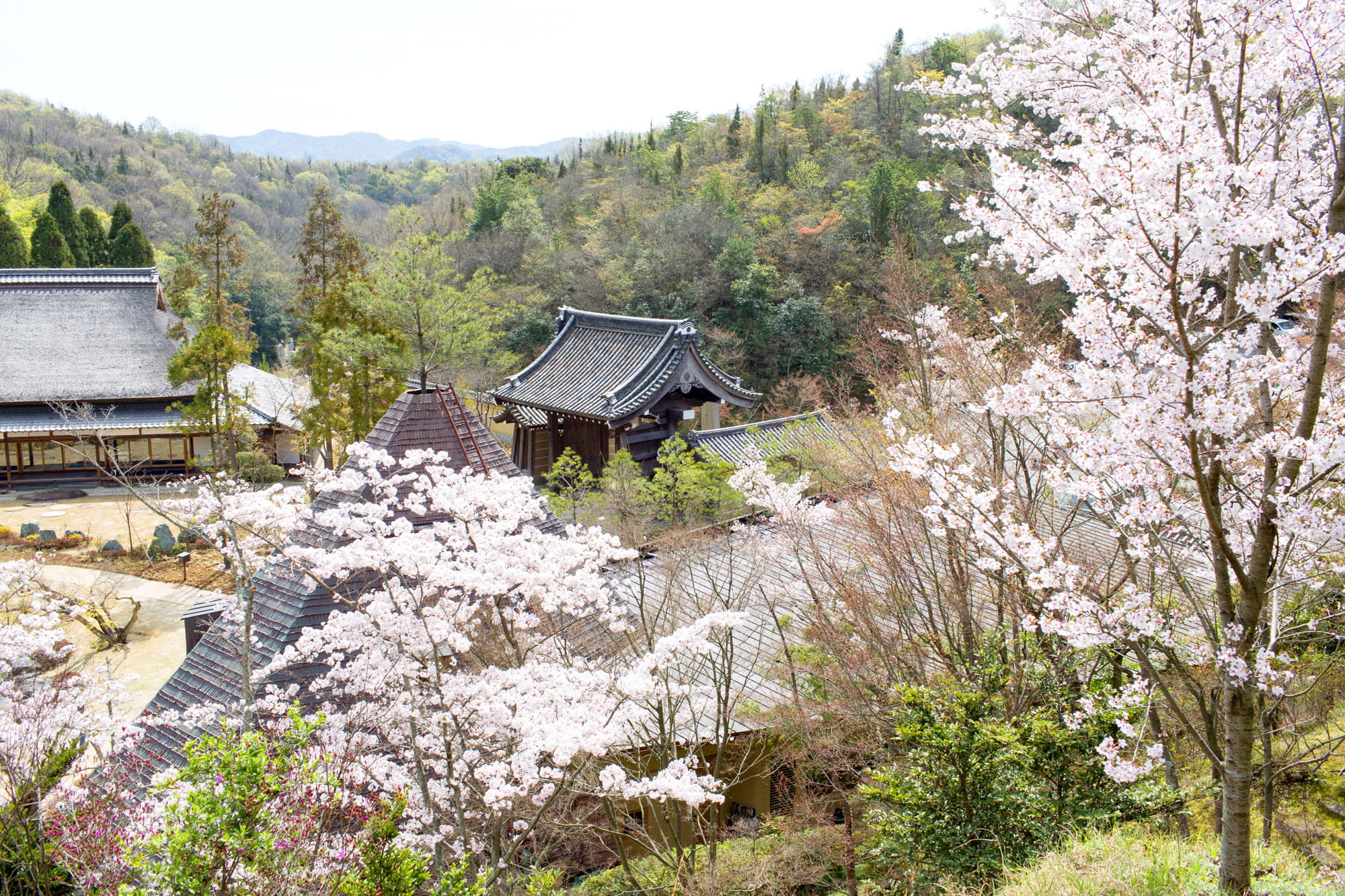ABOUT US
Shinshoji Zen Museum and Gardens is a place for visitors to experience the spirit of Zen through a variety of activities, like tasting a bowl of tea, appreciating a piece of Zen calligraphy, eating a Zen meal that nurtures the body and soul, taking a bath to cleanse the mind and body, and strolling in the extensive gardens.
The vast campus is dotted with interesting architecture, including a hall built in the 17th century that was relocated from Shiga Prefecture, reproduced teahouses originally designed by tea master Sen no Rikyu, and the temple’s own office building, which was designed by renowned architect and architectural historian Terunobu Fujimori using pine, a local tree that symbolizes the Sanyodo (southern mountain region) and Setouchi regions. Linking these buildings are tasteful Zen gardens.
A must-see at the museum is one of Japan’s largest collections of Zen paintings and calligraphies by Zen master Hakuin. Shogondo, the permanent collection gallery, displays work by Hakuin, refreshing the exhibition several times a year. Along with the Zen art collection, an art pavilion stands on the campus. "Kohtei" pavilion was designed by sculptor Kohei Nawa and his creative platform Sandwich Inc. Inside the ship-shaped building, which is completely covered with wood shingles, is a unique installation where visitors can experience subtly glittering lights on the waves. It is Nawa’s way of interpreting the teachings of Zen by expressing their essence through contemporary art.
Shinshoji (Rinzai sect Kenninji school) was completed on 2 December 1965 after Master Ekiju Soshin, the seventh superintendent monk of the Rinzai sect's Kenninji school, was invited by the founding patron Hideo Kambara, one of his devoted followers, to build a temple. The main statue of this temple is Maitreya Buddha and the name of the temple is taken from the name of the founding patron's father, Katsutaro Kambara.
Shinshoji opens the door of Zen to not only Japan but overseas as well. It is designed as a place for self examination in the tradition of the Rinzai Zen school to give all people the chance to realize the point of "living right now". Please enjoy the world of Zen, which is now fully accessible to the general public for the first time ever, through all five senses.
Information
for Visitors
| Hours open | 9:00-17:00 (Last entry at 16:30) |
|---|---|
| Admission |
Adults: 1,500 yen (1,300 yen for groups of 20 and more)
|
Advisory
Committee
- Chairperson
- Katsushige Kambara (Chair of Shinshoji board of directors)
- Committee members (alphabetical order)
- Terunobu Fujimori (Architectural historian, architect. Professor emeritus of the University of Tokyo and Director of Edo Tokyo Museum)
- Mari Hashimoto (Writer and editor. Deputy director of the Eisei Bunko Museum)
- Kohei Nawa (Sculptor)
- Katsuhiro Yoshizawa (Advisor to the International Research Institute for Zen Buddhism at Hanazono University)
- Executive director
- Toshiko Ferrier (Coordinator and producer. Representative of Office Ferrier)
Creators
- Design and supervision
- Kohei Nawa | Sandwich Inc.
- Installation
- Kohei Nawa | WOW
- Landscape Supervision
- Seijun Nishihata (Sora Botanical Garden)
- Graphic design (logos, signs and tools)
- Yuma Harada and Keisuke Yamazoe of UMA/design farm
- Editing (guide map and catalogue)
- Tomomi Tada, Dai Nagae (MUESUM)
- Website
- Takeshi Watamura (FROTSQUARNEL CO.LTD.)
- Souvenir creations
- Hiroshi Kado (Kamisoe)
- Sandwich Inc.
- UMA/design farm
